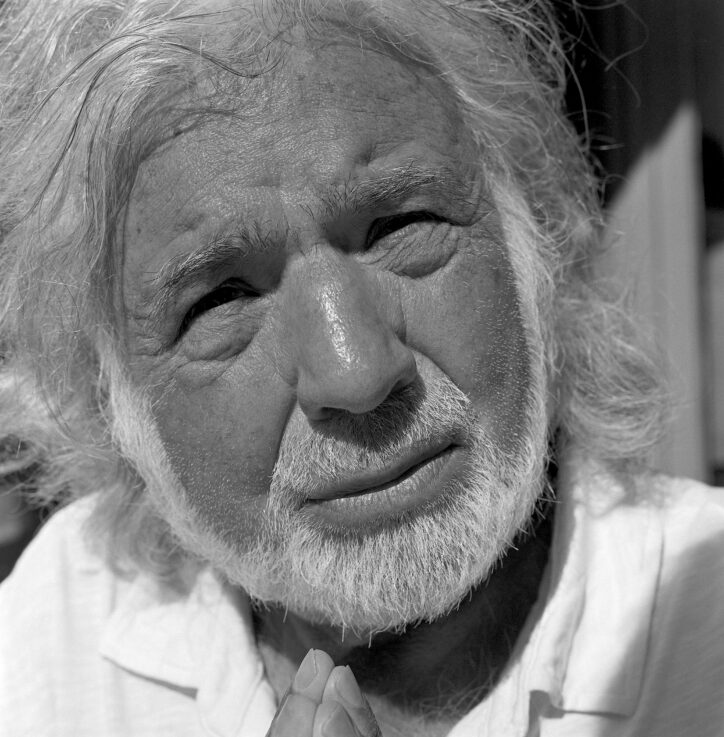All Art is Representation, and Why It Matters: An Exploration of the Convergence of Art and Human Consciousness

To comprehend why all art is representation it’s essential to consider the origin of the word representation and the constellation of meanings around it. As a noun, representation (a word that derives from the Latin repraesentationem), evolved into representacion (c.1400) in Old French, and was defined as “an image, likeness, or symbolic memorial.” But perhaps the Old French verb representer (to present, show, or portray) is closer to the mark when it comes to shaping modern meanings of the word. It’s derived from the Latin representare (to make present, set in view, exhibit, or display), a concept very much in accord with current functional descriptions of how works of art are presented and taken in. In literary theory, the term representation is commonly defined as a simulacrum, something that looks like or resembles; a symbol, something that stands for something or someone; or as a verb, to present a second time, that is re-present. In modern usage, the concept of representation is extremely elastic, extending all the way from a prehistoric cave painting of a deer to a 21st-century novel depicting a dystopian civilization of the future.
However, the idea of representation as a distinctly human activity goes back to those ancient philosophers who conceived of a human being as a “representational animal” or animal symbolicum, a creature whose essential character entails the creation and manipulation of signs and symbols that stand for or take the place of something else. Human language is perhaps the ultimate achievement of this innate human facility for symbol making and manipulation, the foundation underlying abstract reasoning, and the underpinning of our superior ability to convey complex concepts through language, which may well have been a key factor in the survival of our species. It is also an essential element in the creation of art, another distinctly human activity, present in every culture, an activity that long predates human civilization.

That the creator of an ornamental vase or a jeweled necklace dated to 12,000 BCE may not have thought of herself as an artist is immaterial — she made a great effort to fabricate something beautiful, typically in the style of her people, that would be passed down to future generations to be admired and appreciated. She created objects able to transmit part of herself, manifest her skill, and bring elements of her consciousness into the future. Likewise, a reclusive artist who never even displayed his work or sought public recognition still, in the immortal words of Emily Dickinson, has created a “message to the world, committed to hands I cannot see.” The intention and the artifact alone are sufficient even if the ultimate recipients are unknown to the artist. A representation can also be defined as a record, impression, or sensory information about something physical (e.g., an object, a song, a poem) that is presented in a medium such as painting, architecture, opera, etc. However, the degree to which an artwork accurately resembles the original object it’s based on is immaterial. It’s a representation, whether it’s a low-res child’s crayon rendition of a woman with folded arms, or Da Vinci’s Mona Lisa. In other words, both are equally representational in the broadest sense, even though one may be aesthetically far superior.
There is also a fascinating parallel between art and human consciousness itself. We perceive the world through sense data presented to our consciousness that are acquired through the five (and possibly more) senses. These incoming data are representations, in the form of visual, aural, tactile, and other sensory information, that are acquired and processed by the human proprioceptive system, and almost simultaneously interpreted by the brain, which enables them to have meaning and context so we can navigate the world, experience pleasure and pain, avoid danger, etc. In other words, what we perceive, and to a great extent, experience is, like a work of art, a simulacrum or representation of what is set before us, not “reality” in any absolute sense.

The German philosopher Immanuel Kant (1724-1804) understood this very well and formulated his famous concept of the Ding an Sich (thing-in-itself) to refer to those “real things” that underlie our perceptions of them. Kant summarized his doctrine, which came to be known as transcendental idealism, thusly: “Rightly considering objects of sense as mere appearances (we) confess thereby that they are based upon a thing in itself, though we know not this thing as it is in itself, but only know its appearances, viz., the way in which our senses are affected by this unknown something.”
However brilliant, intuitive, and significant Kant’s views may have been, they have since been extensively critiqued by later philosophers as inherently flawed. According to G.E. Schulze’s anonymously published Aenesidemus, “things-in-themselves cannot cause appearances since the category of causality can only find application in objects of experience. Kant, therefore, does not have the right to claim the existence of things-in-themselves.” Fichte agreed, noting, “Philosophy is still not a science, and it can become one only if it is generated by one single principle that is as self-evident as geometry.” Of course, Einstein and quantum physics have since proven that Euclidean geometry and Newtonian laws of motion do not work at extreme microscopic and macroscopic levels, and the long-sought goal of a “unified field theory” has yet to be attained. Perhaps Schopenhauer summed it up best when he credited Kant for being “guided by the truth certainly felt that there lies beyond every phenomenon a being-in-itself whence such a phenomenon obtains its existence,” but concluded that “just because phenomena are known a priori (by logical deduction) means they cannot lead to something independent or different from the phenomenon or representation, and so for this purpose, we have to pursue an entirely different course.”
That art and human consciousness are both, in the broadest sense, representations of human experience, implies that, from the standpoint of the audience or observer, art is a representation of a representation, or an experience two steps removed from “reality” (whatever that is). However, that in no way diminishes the power and significance of art as the distillation, contextualization, and communication of lived human experience — in fact, it enhances it by focusing its impact and paring away extraneous details. Ultimately, any work of art says, in effect, “focus your attention on this which I place before you, not on that, these other things, that are which, for the time being, irrelevant.” While all art is a representation, it is a representation that needs an active participant because art is also expression, an artwork is an expressive product, art embodies the form through which the consciousness of the artist is presented, and ultimately, art is a means for attaining truth and knowledge and expanding one’s experience of the world.

Ars Gratia Artis?
Some artists have claimed to be purists, asserting that they create “art for art’s sake” alone, expressing disdain for artists who do so for other reasons such as material sustenance, acclaim, or as a profession. But what they say really doesn’t matter so long as they create art that is accessible to others and stands as a representation of their perceptions, feelings, and being in the world. Johann Sebastian Bach was employed by the church, Rembrandt van Rijn created works on commission, William Shakespeare wrote sonnets mostly for himself and plays as part of his paid role in an acting company, and Emily Dickenson wrote literary letters for her friends, and poems for herself and the world, hoping they would one day be discovered and inspire others. All were clearly artists of the first rank.
Ars Gratia Artis (Art for Art’s Sake), the Latin motto emblazoned below a roaring Leo the Lion, is the iconic movie intro logo of Metro Goldwyn Mayer (MGM), founded by Marcus Loew, Samuel Goldwyn, and Louis B. Mayer in 1924. Given their proclivities, the motto probably should have read Ars Gratia Pecuniae (Art for Money’s Sake), but MGM did give us The Wizard of Oz and Gone With The Wind, so at least some the fortunes they amassed did wind up funding enduring classics of the cinematic arts.